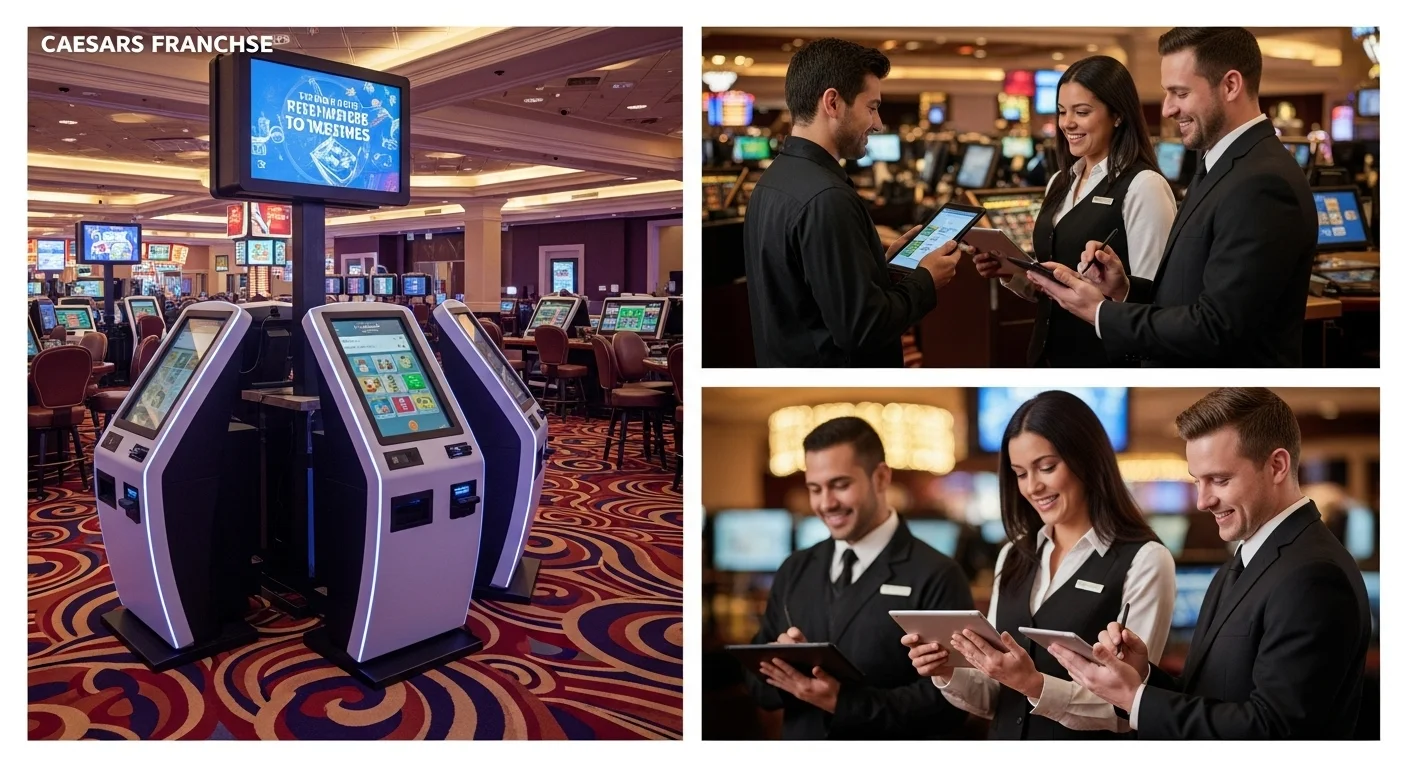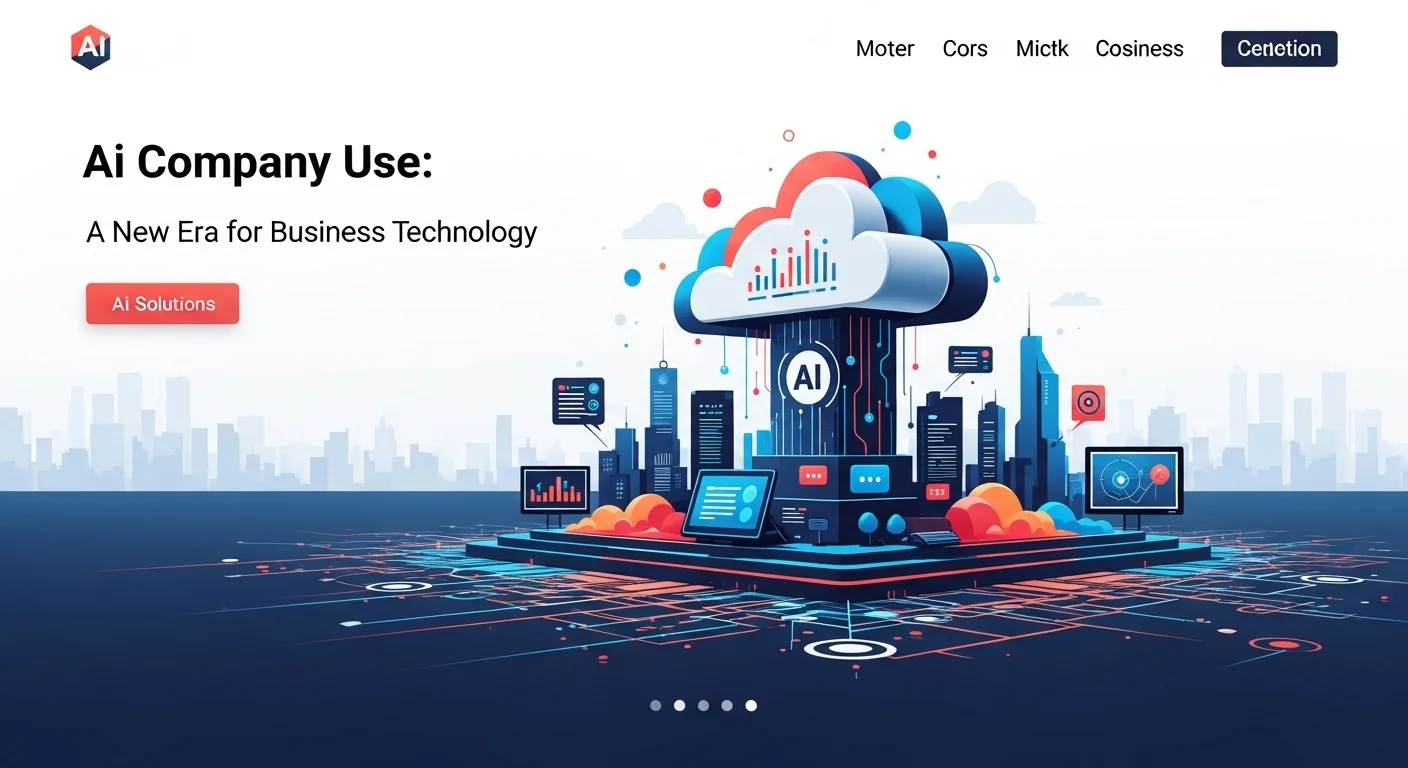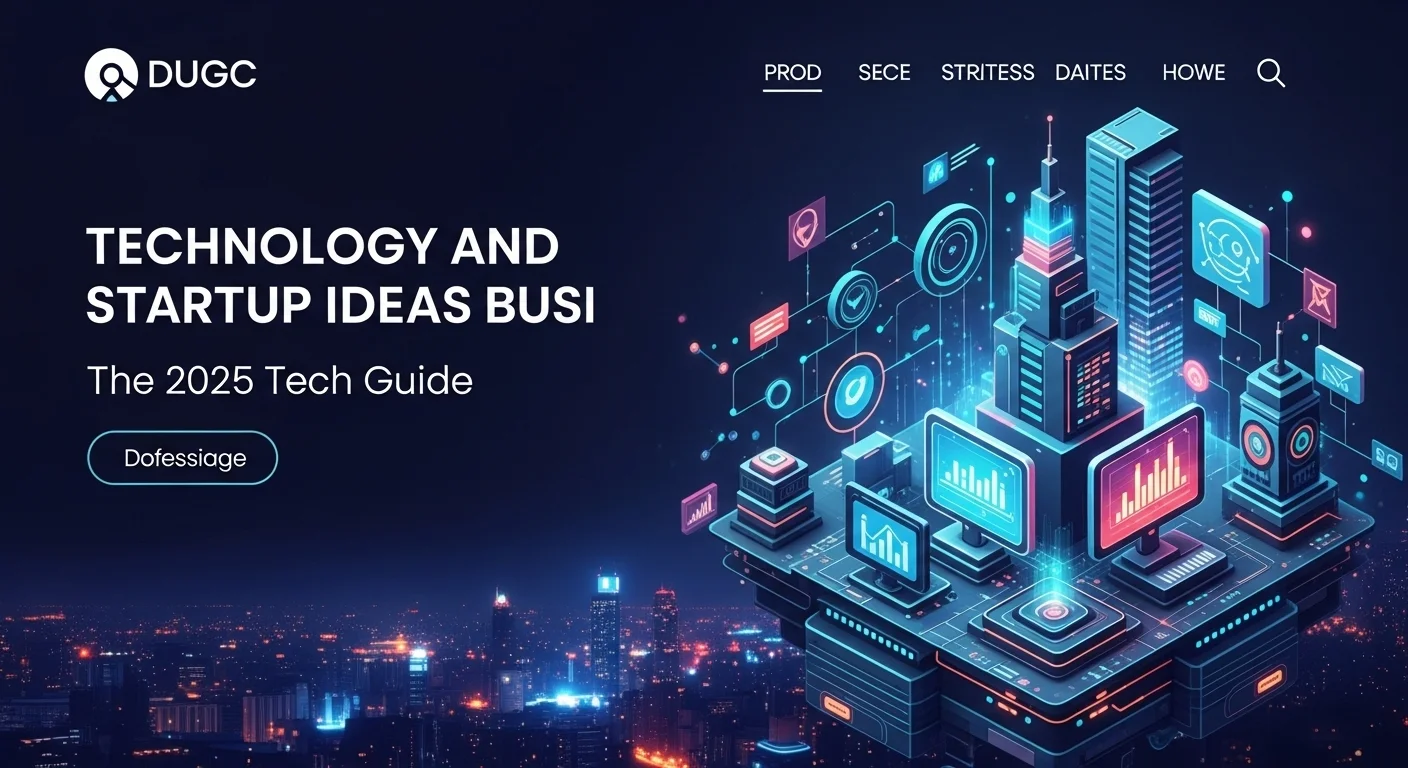The Tech That Built an Empire: An Inside Look at the Little Caesars Franchise

Executive Summary
In the hyper-competitive world of quick-service restaurants, technology isn't just helpful—it's the secret sauce. I've spent years analyzing how franchises use tech, and Little Caesars is a masterclass in innovation. This isn't just about their famous 'Pizza! Pizza!' slogan; it's about a sophisticated technological machine running behind the scenes. In this article, I'll take you on a deep dive into that machine. We'll explore everything from the revolutionary Pizza Portal™ that has changed customer pickups forever, to the complex backend systems that manage a global empire's supply chain and sales. We'll also get practical and talk about the numbers: what does it really cost to open a Little Caesars? We'll break down the initial franchise fee and the other investments you'd need to consider, even looking ahead to 2025 projections. Whether you're an aspiring entrepreneur, a tech lover, or just curious about how a pizza giant operates, this is your guide to understanding the powerful combination of technology and franchising.
Table of Contents
Table of Contents
- What is Little Caesars and Why Does Its Tech Matter?
- Understanding the Investment: The Cost of a Little Caesars Franchise
- The Role of Technology When Buying a Little Caesars Franchise
What is Little Caesars and Why Does Its Tech Matter?
When you hear 'Caesars Franchise' in the food world, your mind should immediately go to Little Caesars. Forget the casinos for a moment; in the franchise space, Little Caesars is the titan we need to talk about. I've been following their journey for years, and it's a story built on more than just affordable pizza. Since their start in 1959, they've climbed to become the world's third-largest pizza chain, and they didn't get there by accident. They did it by constantly asking, "How can we make this easier and faster for our customers?" This mindset is why their tech strategy is so important for anyone to understand today.
The fast-food game is brutal. You win with speed and consistency. Here, technology isn't just a nice-to-have; it's the core of the whole operation. From the second a customer craves a pizza to the moment they're walking out the door, a whole network of tech is working silently. Little Caesars figured this out way back with their 'HOT-N-READY' model. It was a genius move in logistics that let people grab a pizza and go, no waiting. That was the seed of their tech-first philosophy. Fast forward to today, and you have game-changers like the Pizza Portal™, a heated, self-service station for mobile orders. It completely transformed the pickup game. A customer can order on their phone, pay, and grab their pizza from a secure locker without ever speaking to an employee. It’s a huge leap in making things incredibly convenient and efficient.
Understanding the Investment: The Cost of a Little Caesars Franchise
So, you're thinking about jumping in? The first thing we need to talk about is the money. The little caesars franchise cost is a serious investment, so you need to go in with your eyes open. The total initial investment can range anywhere from about $393,000 to over $1.7 million. That's a huge range, I know, but it depends on so many factors—are you in a major city or a small town? Are you buying the property or leasing? How much construction is needed? A smaller spot, like inside a convenience store, will be on the lower end of that scale. The company wants to see that you're financially solid, typically requiring a net worth of around $400,000, with at least $200,000 of that ready to go in cash. This isn't pocket change; it's a major commitment where technology is key to getting a good return.
A big piece of that initial cost is the little caesars franchise fee. This is what you pay upfront to use the famous brand name, get their playbook for running the business, and receive all the initial training. For your first store, that fee is typically $20,000. They're smart about encouraging growth, though; if you open more stores, the fee drops to $15,000 for each new one. After that fee, the rest of the money goes into building the actual restaurant. Think of things like construction and renovations, which can vary wildly, and buying all the equipment and initial supplies from their distributor, Blue Line. This can run between $250,500 and $369,500. Looking ahead, the little caesars franchise cost 2025 will likely follow these trends, with an even bigger slice of the pie dedicated to the tech infrastructure that makes it all work.
The Role of Technology When Buying a Little Caesars Franchise
When you're looking at a little caesars franchise for sale, remember this: you're not just buying a pizza oven and a storefront. You're buying into a highly advanced technology ecosystem. An existing store should already have all these integrated systems running. Part of your homework is to audit that tech. Is the Point of Sale (POS) system from this decade? Is the Pizza Portal™ installed and working perfectly? A store with outdated tech means you'll have to spend a lot of capital right after buying it, and that's something you need to factor into the sale price.
The star of the show for any modern Little Caesars is that mobile app and Pizza Portal™ combo. I've seen it in action, and it’s incredibly smooth. The app lets you customize your order, pay, and even schedule a pickup days in advance. You get a notification with a QR code or a PIN. You walk into the store, skip the line, go to the Portal, scan your code, a little door opens, and there's your hot, fresh pizza. This system, which they built with Apex Supply Chain Technologies, was a first for the industry. It solves so many problems at once: less waiting, fewer mistakes, and a contactless experience, which became a lifesaver for business recently. If you're considering buying a franchise, the condition of this system is a massive indicator of the store's health and its ability to meet the demands of today's customer.

Complete Guide to Little Caesars' Technology and Business Solutions
When you peel back the layers of a Little Caesars franchise, you find a sophisticated digital framework built for one purpose: helping franchisees succeed. I like to think of it as a business-in-a-box, but the box is powered by some serious tech. This framework covers everything: the tech your customers see, the systems you use to run the store, the logistics that get you supplies, and the marketing that brings people in. Every piece is connected, creating a powerful solution that supports you from day one. Understanding this is key to seeing the true value behind the little caesars franchise cost.
Core Operational Technology: The Franchisee's Command Center
The brain of every Little Caesars store is its Point of Sale (POS) system. But forget the old-timey cash registers; these are the command centers of the modern restaurant. In a franchise network, everything is cloud-based. This means every time you sell a pizza, that data is instantly synced and available for you to see, whether you're in the back office or on vacation. As a franchisee, you can watch sales in real-time, see your busiest hours, and know which toppings are flying out of the kitchen. This isn't just cool data; it's intel you use to make smart decisions about how many staff you need on a Friday night or what to stock up on.
The POS also talks directly to your inventory. It tracks every slice of pepperoni and every ounce of cheese, alerting you when you're running low. This kind of automation is a lifesaver—it prevents you from running out of ingredients and helps you cut down on food waste, which saves you money. It also handles the boring stuff automatically, like calculating the weekly royalty fees (usually 6% of sales) and advertising contributions (up to 7%) that you owe to corporate. This makes the financial side of things much simpler and more transparent. When you look at the little caesars franchise cost 2025, know that a powerful, cloud-based POS is a non-negotiable part of that package.
Supply Chain and Logistics Technology: The Art of Consistency
Consistency is king in franchising. A Hot-N-Ready pizza needs to taste the same in Miami as it does in Seattle. Little Caesars achieves this with an incredibly efficient, tech-driven supply chain run by their own distribution company, Blue Line. The logistics of serving thousands of stores are mind-boggling, but they make it look easy. As a franchisee, you place orders through a central system that uses smart algorithms to predict what you'll need. It looks at your past sales, the time of year, and even upcoming promotions to get it right. This stops you from ordering too much (which ties up your cash) or too little (which means lost sales).
This technology runs all the way to the delivery trucks. Warehouse systems organize everything perfectly, and routing software plans the most efficient delivery routes to your door. For a franchisee, this is a huge weight off your shoulders. You don't have to waste time finding suppliers or haggling over prices. You get the benefit of the corporation's massive buying power, and the tech ensures the whole process is smooth and reliable. This built-in support system is a major part of the value you get for the overall little caesars franchise cost.
Marketing Technology and Getting to Know Your Customer
Today, great marketing is all about data. The Little Caesars mobile app isn't just a convenient ordering tool; it's a way to understand customers. Every order placed online tells a story: who's ordering, what they like, how often they come back, and which deals they love. This information is gold. The company uses it to create targeted marketing campaigns. For instance, if you're a regular who loves the deep dish, you might get a special offer just for that. It’s so much more effective than old-school, one-size-fits-all ads.
As a franchisee, you get the direct benefit of these big-budget national campaigns that build the brand and drive traffic. On top of that, the platform gives you tools for your own local marketing. You could run a special promotion through the app just for people in your neighborhood. The system also helps you build loyalty. By offering rewards for repeat business through the app, Little Caesars encourages customers to keep coming back. When an investor is eyeing a little caesars franchise for sale, a smart move is to ask about the store's digital customer base. A store with a lot of engaged app users is simply worth more. The ongoing little caesars franchise fee and ad fees are your investment in this powerful, tech-driven marketing engine that you could never build on your own.

Tips and Strategies to Improve Your Franchise's Technology Experience
Whether you're looking to buy a Little Caesars or you already own one, how you use technology will define your success. The company gives you a great set of tools, but it's your strategy that will make you stand out. From locking down your cybersecurity to looking ahead at things like AI, being proactive with tech is how you win. Here are some of my go-to tips and strategies from years of experience, keeping in mind the significant investment of the little caesars franchise cost.
Strengthening Cybersecurity in Your Franchise: Your Digital Fortress
Think of your franchise as a digital fortress. In today's world, restaurants are a huge target for hackers. You're handling customer credit card details and employee information every single day. A data breach could sink your business and ruin your reputation. Your first line of defense is your Point of Sale (POS) system. Make sure it uses end-to-end encryption for every transaction. I can't stress this enough: use strong, unique passwords for every employee account and force regular updates. If you can, turn on multi-factor authentication (MFA) for an extra lock on the door.
Your Wi-Fi network is another weak spot. You'll have a network for your business operations and maybe a separate one for guests. These two networks must be completely separate. Your internal network, which connects your POS and computers, should be password-protected and hidden. The guest network should be wide open but walled off from your business systems. Finally, one of the best defenses is training your team. Teach them how to spot phishing emails—those tricky messages designed to steal passwords—and drill into them the importance of good security habits. If you're looking at a little caesars franchise for sale, I highly recommend getting a cybersecurity audit done before you sign anything.
Leveraging the Cloud for Growth and Efficiency
The modern franchise runs on the cloud. For anyone managing one or more stores, the cloud is a game-changer. It gives you flexibility, security, and access to your business from anywhere. It's like having an infinitely large, super-secure filing cabinet that you can open from your laptop or phone. If you own multiple locations, you can sit down with your morning coffee and see how every single one of your stores is performing in real-time from one screen. It’s incredibly powerful.
A huge benefit I always point out is data backup. With the cloud, your sales records and customer data aren't sitting on a single computer in the back room that could crash or be stolen. It's all backed up safely in remote data centers. If disaster strikes, you can get back up and running quickly. And as you grow, the cloud grows with you. Adding a new store to your dashboard is simple, with no need to buy expensive new server equipment. This kind of scalability makes growth so much more manageable and affordable, which is a big deal given the initial little caesars franchise cost 2025. My advice is to really dig into the cloud tools you're given. Many have advanced analytics that can show you where you can be more efficient and save money.
Embracing the Future: AI and Automation
The fast-food world is on the edge of a revolution, and it's being driven by Artificial Intelligence (AI). Little Caesars already automated the pickup with the Pizza Portal™, but that's just the beginning. I've seen AI do incredible things with inventory, for example. It can analyze your sales, the local weather forecast, and even community events to predict exactly how much dough you'll need for the weekend. This means less waste and happier customers who can always get what they want.
Soon, we'll likely see AI handling more of the ordering process itself. AI-powered voice bots could take drive-thru or phone orders with perfect accuracy, freeing up your employees to focus on making great pizza. This makes the whole process faster and smoother for everyone. AI can also make your marketing hyper-personal. By looking at a customer's order history, it can create special offers just for them, which are way more effective. As a franchisee, you need to keep an eye on these trends. While corporate will lead the charge, the franchisees who are early adopters and really understand this stuff will be the most successful. Remember that your ongoing little caesars franchise fee helps fund the research into these next-generation technologies. The future of franchising is digital, and success belongs to those who embrace it.
Expert Reviews & Testimonials
Sarah Johnson, Business Owner ⭐⭐⭐
The information about the Caesars Franchise is accurate, but as a business owner, I would have loved to see more real-world examples I could apply directly.
Mike Chen, IT Consultant ⭐⭐⭐⭐
A really useful article on the Caesars Franchise. It definitely helped me grasp the topic, though some of the tech jargon could have been a little simpler.
Emma Davis, Tech Expert ⭐⭐⭐⭐⭐
Fantastic article! So comprehensive on the Caesars Franchise. As a tech specialist, this was incredibly helpful and I understood everything perfectly. Great job!



